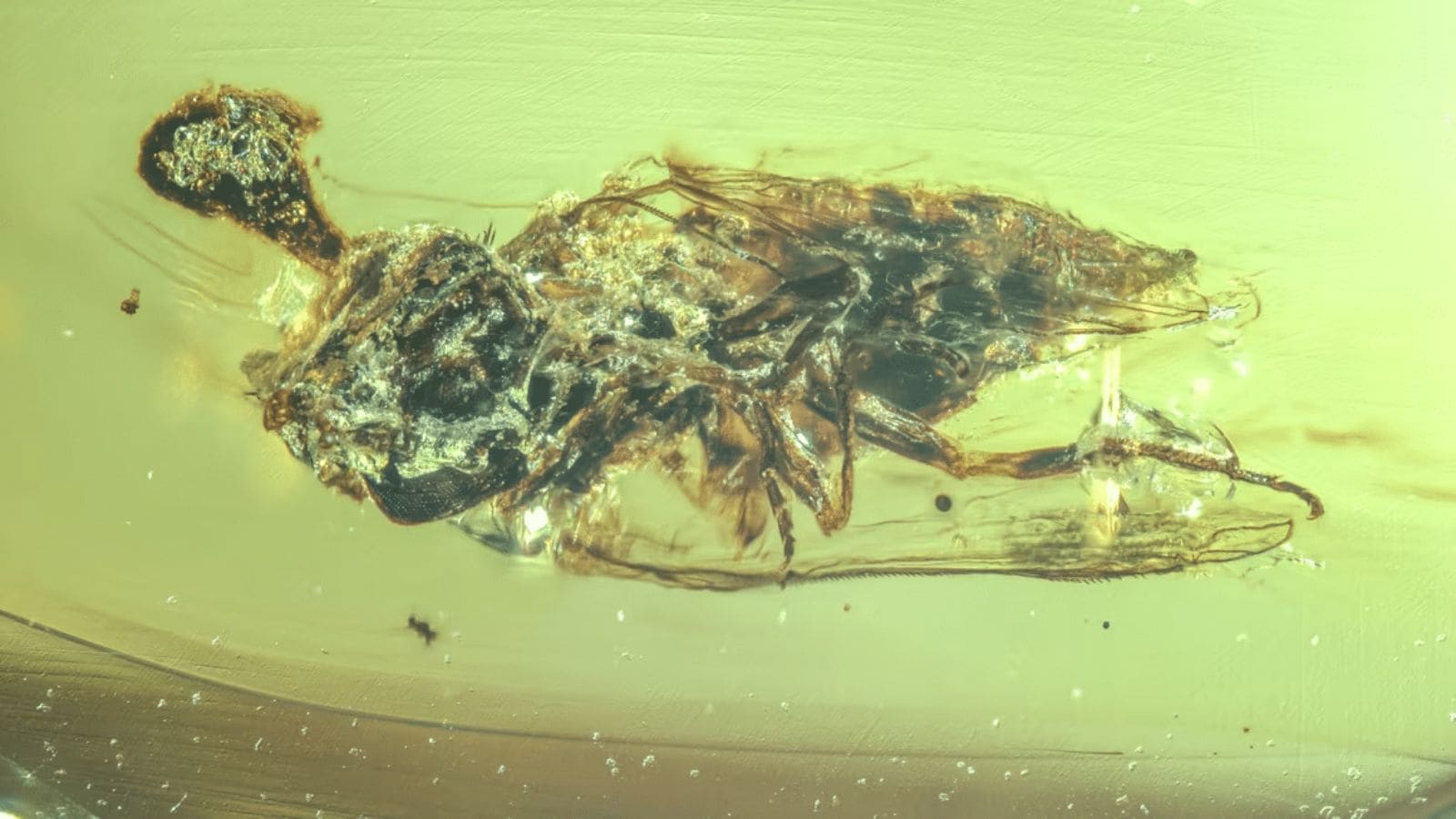A 99-million-year-old piece of amber has preserved a haunting moment of nature: a fly with a parasitic fungus bursting from its head. Another piece trapped an ant similarly infected, offering two of the oldest examples of “zombie fungi” in the fossil record.
These fungi, belonging to the genus Ophiocordyceps, are known for hijacking their hosts’ bodies before killing them. The specimens were discovered by researchers at Yunnan University in China, who used microscopes and 3D imaging to study the amber, according to a study published June 11 in Proceedings of the Royal Society B, CNN reported.
Lead author Yuhui Zhuang described the fossils as rare. “Amber gives us this opportunity to visualize the ancient ecological relationships preserved in fossils,” he told CNN.
The fly and ant were infected with newly identified species: Paleoophiocordyceps ironomyiae and Paleoophiocordyceps gerontoformicae, respectively. These fungi are relatives of modern “zombie-ant” fungi, made famous by the HBO show ‘The Last of Us’.
The fossils suggest that complex ecological interactions, including parasitic manipulation, were already present in the Cretaceous period. “It appears that ants were targeted early for zombification,” said Conrad Labandeira of the Smithsonian Museum of Natural History, who was not involved in the study, the CNN reported.
The fungi likely killed their hosts before the insects became trapped in sticky tree resin, which eventually fossilized into amber. This process allowed an extremely rare glimpse into ancient parasitic behavior.
Scientists say such parasitic fungi played a critical role in shaping insect populations over millions of years. Phil Barden, an expert on amber fossils at the New Jersey Institute of Technology, called the fossils a window into “the strangeness of the natural world” even during the time of dinosaurs.
Story continues below this ad
The amber was sourced from Myanmar’s markets prior to 2017, the study said, before the country’s civil conflict escalated. Ethical concerns have been raised in recent years about the trade of Burmese amber due to links to conflict funding.
© IE Online Media Services Pvt Ltd





Average Rating